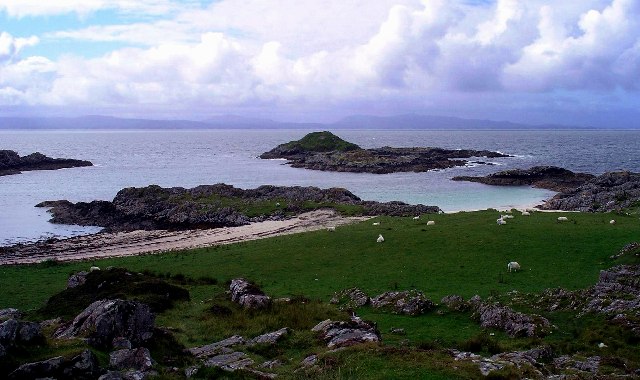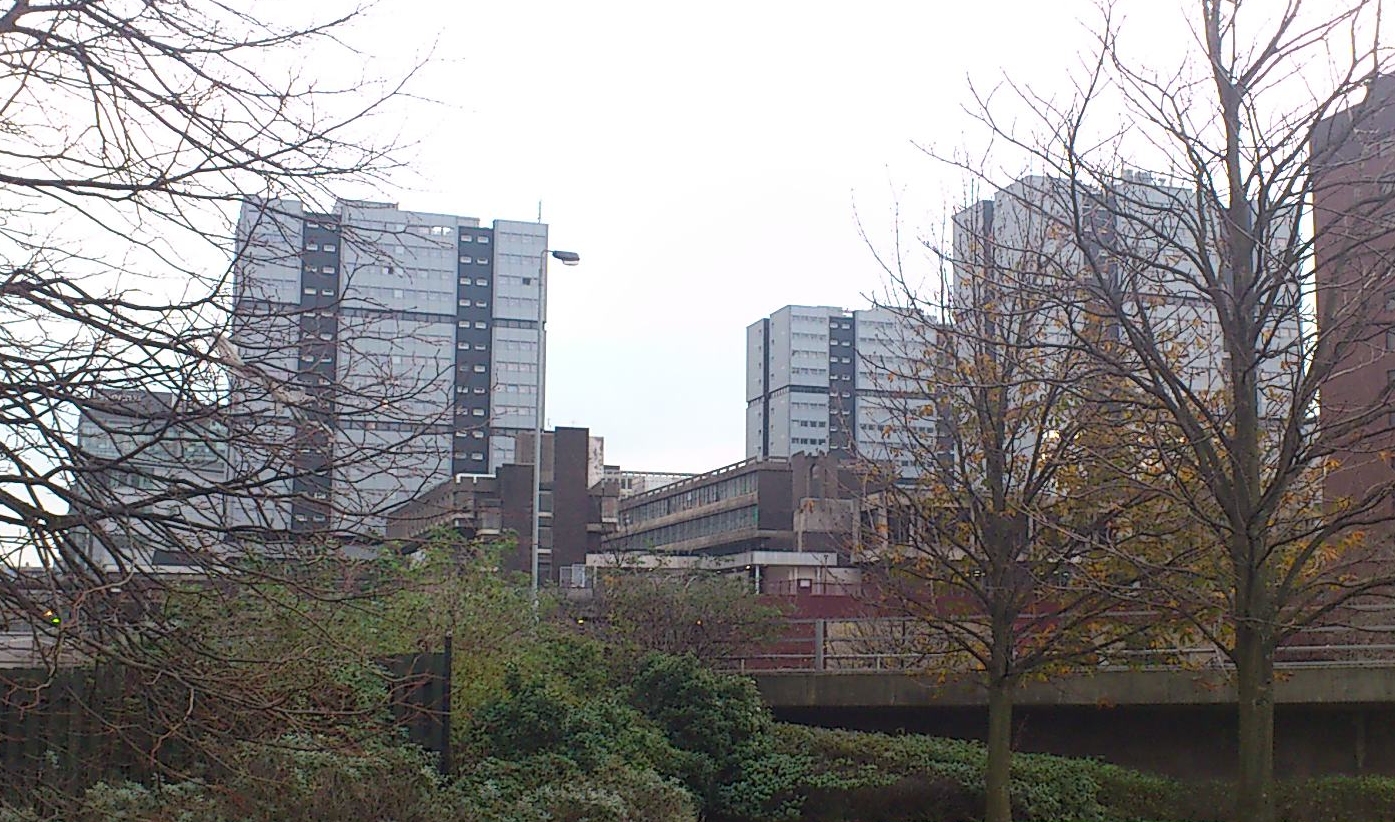|
Angus MacDonald (bishop)
Angus MacDonald (1844–1900) was a Scottish Roman Catholic priest, who later served as the first Bishop of Argyll and the Isles from 1878 to 1892 and as the third Archbishop of St. Andrews and Edinburgh from 1892 to 1900. Early life Born in Borrodale on the Isle of Skye on 18 September 1844, he was the third son of Angus MacDonald and Mary MacDonald (née Watson). His elder brother was Hugh MacDonald, Bishop of Aberdeen. Angus MacDonald was educated at St Cuthbert's College, Ushaw. Afterwards, he graduated from the University of London with a Bachelor of Arts. Priestly career After his ordination to the priesthood on 7 July 1872, he was first stationed at St Patrick's Church, Anderston, Glasgow, then sent to Arisaig, Inverness-shire to help the aged Father William Mackintosh, at whose death he took charge of that parish. There he laboured among the people he had known from childhood, his knowledge of Gaelic enabling him to instruct and help those and there were a great ma ... [...More Info...] [...Related Items...] OR: [Wikipedia] [Google] [Baidu] |
The Most Reverend
The Most Reverend is a style applied to certain religious figures, primarily within the historic denominations of Christianity, but occasionally in some more modern traditions also. It is a variant of the more common style "The Reverend". Anglican In the Anglican Communion, the style is applied to archbishops (including those who, for historical reasons, bear an alternative title, such as presiding bishop), rather than the style "The Right Reverend" which is used by other bishops. "The Most Reverend" is used by both primates (the senior archbishop of each independent national or regional church) and metropolitan archbishops (as metropolitan of an ecclesiastical province within a national or regional church). Retired archbishops usually revert to being styled "The Right Reverend", although they may be appointed "archbishop emeritus" by their province on retirement, in which case they retain the title "archbishop" and the style "The Most Reverend", as a courtesy. Archbishop Des ... [...More Info...] [...Related Items...] OR: [Wikipedia] [Google] [Baidu] |
Roman Catholic Bishop Of Argyll And The Isles
The Bishop of Argyll and the Isles is the ordinary of the Roman Catholic Diocese of Argyll and the Isles in the Province of Saint Andrews and Edinburgh, Scotland.Diocese of Argyll and the Isles ''Catholic-Hierarchy''. Retrieved 12 January 2010. The Scottish hierarchy was restored by on 15 March 1878 and the ancient bishoprics of and [...More Info...] [...Related Items...] OR: [Wikipedia] [Google] [Baidu] |
Roman Catholic Diocese Of Argyll And The Isles
The Roman Catholic Diocese of Argyll and the Isles (Latin ) is an ecclesiastical territory or diocese of the Catholic Church in Scotland, in the Province of Saint Andrews and Edinburgh. Overview The diocese covers an area of 31,080 km² and has a Catholic population of 10,546 (14.1%) out of a total population of 74,546 (2006 figures). The see is in the town of Oban where the seat is located at St Columba's Cathedral. History The diocese was erected on 5 March 1878 following the restoration of the Scottish Catholic hierarchy. On 28 December 2015 Pope Francis appointed Father Brian McGee to succeed the Right Reverend Joseph Toal as eleventh Bishop of Argyll and the Isles. Timeline After its establishment in 1878, the seat of the diocese was in various buildings each overlapping the same site: * 5 March 1878: The Scottish Catholic hierarchy is restored and the Diocese of Argyll and the Isles is erected. There was no cathedral, and the bishop resided in, what became, the Ca ... [...More Info...] [...Related Items...] OR: [Wikipedia] [Google] [Baidu] |
Restoration Of The Scottish Hierarchy
The re-establishment of the hierarchy of the Catholic Church in Scotland took effect on 15 March 1878. This followed the restoration of the English hierarchy in 1850. The restoration was carried out on the instructions of Pope Leo XIII and was one of the first acts of his papacy. The "old" hierarchy had ended in 1603 when Archbishop Beaton of the Archdiocese of Glasgow died in Paris. In the intervening period from the Scottish Reformation until the restoration of the hierarchy, Scottish Catholics were ministered to by an underground network of priests (such as Saint John Ogilvie, Martyr) who were overseen by Apostolic prefects and then Apostolic Vicars as the oppression of Catholics became less severe.Archdiocese of Edinburgh retrieved 2007-11-25 The restored hierarchy were members of the Apostolic Vicariate and the territories ... [...More Info...] [...Related Items...] OR: [Wikipedia] [Google] [Baidu] |
English Language
English is a West Germanic language of the Indo-European language family, with its earliest forms spoken by the inhabitants of early medieval England. It is named after the Angles, one of the ancient Germanic peoples that migrated to the island of Great Britain. Existing on a dialect continuum with Scots, and then closest related to the Low Saxon and Frisian languages, English is genealogically West Germanic. However, its vocabulary is also distinctively influenced by dialects of France (about 29% of Modern English words) and Latin (also about 29%), plus some grammar and a small amount of core vocabulary influenced by Old Norse (a North Germanic language). Speakers of English are called Anglophones. The earliest forms of English, collectively known as Old English, evolved from a group of West Germanic (Ingvaeonic) dialects brought to Great Britain by Anglo-Saxon settlers in the 5th century and further mutated by Norse-speaking Viking settlers starting in the 8th and 9th ... [...More Info...] [...Related Items...] OR: [Wikipedia] [Google] [Baidu] |
Scottish Gaelic
Scottish Gaelic ( gd, Gàidhlig ), also known as Scots Gaelic and Gaelic, is a Goidelic language (in the Celtic branch of the Indo-European language family) native to the Gaels of Scotland. As a Goidelic language, Scottish Gaelic, as well as both Irish and Manx, developed out of Old Irish. It became a distinct spoken language sometime in the 13th century in the Middle Irish period, although a common literary language was shared by the Gaels of both Ireland and Scotland until well into the 17th century. Most of modern Scotland was once Gaelic-speaking, as evidenced especially by Gaelic-language place names. In the 2011 census of Scotland, 57,375 people (1.1% of the Scottish population aged over 3 years old) reported being able to speak Gaelic, 1,275 fewer than in 2001. The highest percentages of Gaelic speakers were in the Outer Hebrides. Nevertheless, there is a language revival, and the number of speakers of the language under age 20 did not decrease between the 2001 and ... [...More Info...] [...Related Items...] OR: [Wikipedia] [Google] [Baidu] |
Inverness-shire
Inverness-shire ( gd, Siorrachd Inbhir Nis) is a historic county, registration county and lieutenancy area of Scotland. Covering much of the Highlands and Outer Hebrides, it is Scotland's largest county, though one of the smallest in population, with 67,733 people or 1.34% of the Scottish population. Definition The extent of the lieutenancy area was defined in 1975 as covering the districts of Inverness, Badenoch & Strathspey, and Lochaber. Thus it differs from the county in that it includes parts of what were once Moray and Argyll, but does not include any of the Outer Hebrides which were given their own lieutenancy area — the Western Isles. Geography Inverness-shire is Scotland's largest county, and the second largest in the UK as a whole after Yorkshire. It borders Ross-shire to the north, Nairnshire, Moray, Banffshire and Aberdeenshire to the east, and Perthshire and Argyllshire to the south. Its mainland section covers a large area of the Highlands, bordering the Se ... [...More Info...] [...Related Items...] OR: [Wikipedia] [Google] [Baidu] |
Arisaig
Arisaig ( gd, Àrasaig) is a village in Lochaber, Inverness-shire. It lies south of Mallaig on the west coast of the Scottish Highlands, within the Rough Bounds. Arisaig is also the traditional name for part of the surrounding peninsula south of Loch Morar, extending east to Moidart. Etymologically, Arisaig means "safe bay". It lies in the Scottish council area of Highland and has a population of about 300. Prehistory Realignment of a 6 km section of the A830 road in Arisaig led to archaeological investigations in 2000–2001 by the Centre for Field Archaeology (CFA), the University of Edinburgh, and Headland Archaeology Ltd, which found a Bronze Age kerb cairn, turf buildings and shieling huts. The shielings were repeatedly reused through the medieval and post-medieval periods, but themselves were on top of Bronze Age remains. Analysis of peat cores has revealed a history of continuous, but gradual decline in woodland, starting in about 3200 BC and continuing to the p ... [...More Info...] [...Related Items...] OR: [Wikipedia] [Google] [Baidu] |
Glasgow
Glasgow ( ; sco, Glesca or ; gd, Glaschu ) is the most populous city in Scotland and the fourth-most populous city in the United Kingdom, as well as being the 27th largest city by population in Europe. In 2020, it had an estimated population of 635,640. Straddling the border between historic Lanarkshire and Renfrewshire, the city now forms the Glasgow City Council area, one of the 32 council areas of Scotland, and is governed by Glasgow City Council. It is situated on the River Clyde in the country's West Central Lowlands. Glasgow has the largest economy in Scotland and the third-highest GDP per capita of any city in the UK. Glasgow's major cultural institutions – the Burrell Collection, Kelvingrove Art Gallery and Museum, the Royal Conservatoire of Scotland, the Royal Scottish National Orchestra, Scottish Ballet and Scottish Opera – enjoy international reputations. The city was the European Capital of Culture in 1990 and is notable for its architecture, cult ... [...More Info...] [...Related Items...] OR: [Wikipedia] [Google] [Baidu] |
Anderston
Anderston ( sco, Anderstoun, gd, Baile Aindrea) is an area of Glasgow, Scotland. It is on the north bank of the River Clyde and forms the south western edge of the city centre. Established as a village of handloom weavers in the early 18th century, Anderston was an independent burgh of barony from 1824 until it was incorporated into the City of Glasgow in 1846. The district is served by Anderston railway station. Foundation of Anderston The land on which the present day district of Anderston stands was once known as the Bishop's Forest. These lands, situated to the west of medieval Glasgow, were granted to the Bishop of Glasgow by King James II of Scotland in 1450. The lands of Stobcross, which occupied part of this area, were the property of the Anderson family from the mid-16th century, and here they built their mansion, Stobcross House. Tradition has it that the name came from a wooden cross or ‘stob’ which marked the spot. Stobcross House was demolished in 1875 to ma ... [...More Info...] [...Related Items...] OR: [Wikipedia] [Google] [Baidu] |
Bachelor Of Arts
Bachelor of arts (BA or AB; from the Latin ', ', or ') is a bachelor's degree awarded for an undergraduate program in the arts, or, in some cases, other disciplines. A Bachelor of Arts degree course is generally completed in three or four years, depending on the country and institution. * Degree attainment typically takes four years in Afghanistan, Armenia, Azerbaijan, Bangladesh, Brazil, Brunei, China, Egypt, Ghana, Greece, Georgia, Hong Kong, Indonesia, Iran, Iraq, Ireland, Japan, Kazakhstan, Kenya, Kuwait, Latvia, Lebanon, Lithuania, Mexico, Malaysia, Mongolia, Myanmar, Nepal, Netherlands, Nigeria, Pakistan, the Philippines, Qatar, Russia, Saudi Arabia, Scotland, Serbia, South Korea, Spain, Sri Lanka, Taiwan, Thailand, Turkey, Ukraine, the United States and Zambia. * Degree attainment typically takes three years in Albania, Australia, Bosnia and Herzegovina, the Caribbean, Iceland, India, Israel, Italy, New Zealand, Norway, South Africa, Switzerland, the Canadian province of ... [...More Info...] [...Related Items...] OR: [Wikipedia] [Google] [Baidu] |



